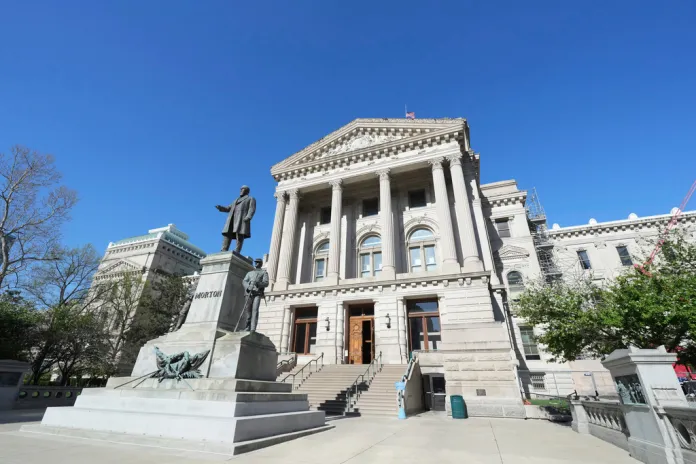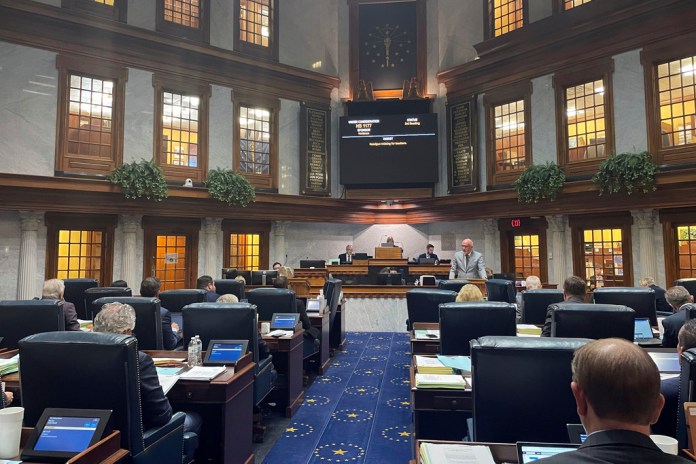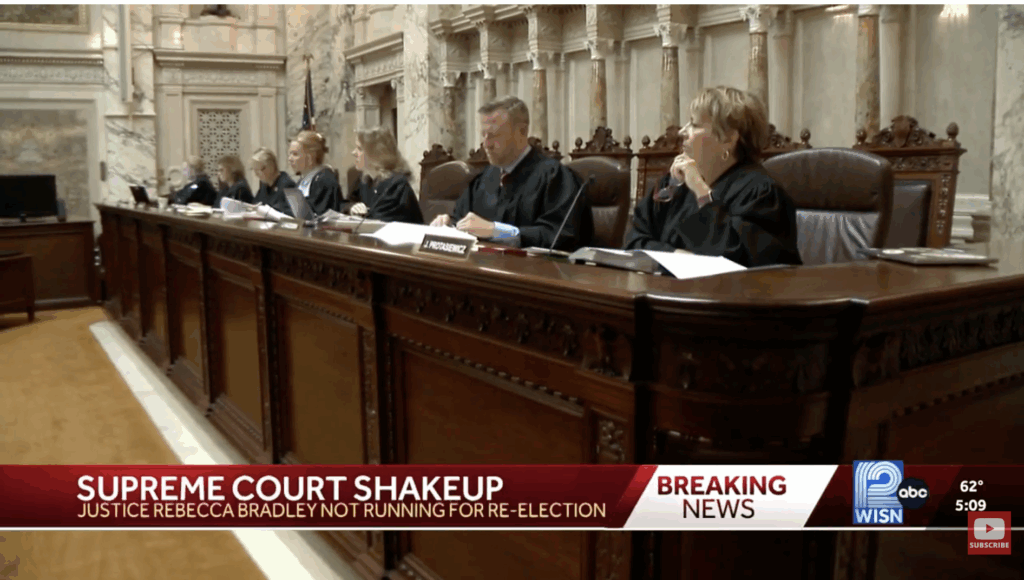6 Key Moments From Arguments In SCOTUS Redistricting Case
The U.S.Supreme Court recently heard oral arguments in two significant redistricting cases from Louisiana-*Louisiana v. Callais* and *Robinson v. Callais*-which focus on the use of race in drawing congressional districts. The controversy centers on Louisiana’s redrawing of its map to create a second black-majority district after legal challenges to its original single black-majority district, raising questions about racial gerrymandering and compliance with the Voting Rights Act (Section 2) and the 14th Amendment’s equal protection clause.
During the hearing, justices rigorously questioned the parties on the legal and constitutional implications of race-based districting. Notably, Justice Ketanji Brown Jackson suggested that Black voters might be considered “disabled” due to systemic barriers to voting, likening this to protections under the Americans with Disabilities Act. Justice Clarence Thomas highlighted how the federal court’s intervention was the driving force behind the creation of the second black-majority district.
Principal Deputy Solicitor General Hashim Mooppan argued that if the voters in question were white Democrats, there would be no justification for creating an additional district, calling attention to what he described as a racial double standard. Justice Neil Gorsuch challenged the NAACP’s lawyer Janai Nelson over her apparent acceptance of some forms of race-based discrimination in redistricting, querying the limits and “breathing room” states have in using race as a factor.
Justice Brett Kavanaugh focused on whether there should be an “end point” or time limit to the use of race-based remedies in voting district maps. Nelson responded that while remedies usually have time limits,she opposed an indefinite ban,arguing Section 2 of the Voting Rights Act remains necessary.
The hearing also included tense exchanges, with Jackson expressing frustration over arguments opposing remedies for racial vote dilution and emphasizing the importance of addressing discrimination’s ongoing effects.
These cases could have far-reaching consequences for how race is considered in electoral redistricting, potentially reshaping American electoral politics and the future application of the Voting Rights Act.
SUPREME COURT OF THE UNITED STATES — The U.S. Supreme Court held oral arguments in a pair of high stakes redistricting cases that could significantly reshape American electoral politics.
Known as Louisiana v. Callais and Robinson v. Callais, the matter focuses on a dispute over the use of race in Louisiana’s congressional map. While the state’s initial map included a single black-majority district, a lawsuit and subsequent legal battle led lawmakers to redraw the map to include a second black-majority district, producing another legal battle that centered on the state’s allegedly unlawful use of race when creating the new map.
During oral arguments, the justices probed parties on the facts of the respective cases and the longstanding judicial conflict over provisions of the Voting Rights Act (Section 2) and 14th Amendment (equal protection clause). Here are some the biggest moments from the hearing.
Jackson Said What About the Disabled?
Associate Justice Ketanji Brown Jackson has never been one to shy away from making ill-advised statements, whether they be in interviews or opinions. So, it wasn’t surprising when the Biden appointee suggested race be considered by states in redistricting because black Americans are systemically “disabled” and don’t have legitimate access to the elections process.
“Congress passed the Americans with Disabilities Act against the backdrop of a world that was generally not accessible to people with disabilities, and so it was discriminatory in effect because these folks were not able to access these buildings,” Jackson said, effectively arguing that it doesn’t matter whether such discrimination is intentional or not.
“I guess I don’t understand why that’s not what’s happening here. … We are responding to current-day manifestations of past and present decisions that disadvantage minorities and make it so that they don’t have equal access to the voting system, right? They’re disabled … We say that’s a way in which you see that these processes are not equally open.”
Thomas Asks a Simple (Yet Meaningful) Question
As the longest serving member of the current court, Associate Justice Clarence Thomas has often served as a critical voice of reason in many matters that come before the highest bench in the land. One of the ways he does this is through simple, yet meaningful, questions to parties in oral arguments.
While questioning Louisiana Solicitor General Ben Aguiñaga, Thomas asked “what role” the federal district court’s block on the state’s initial map “play[ed] in development of” the new map that included a second black-majority district. The state solicitor general disclosed that the court’s order is the “only reason” Louisiana drew a new map.
“Justice Thomas, [that court decision] is the only reason [this new map] exists,” Aguiñaga said. “We fought tooth and nail in the Robinson litigation itself in telling the courts that we did not think the Constitution permitted us to draw a second majority-black district. As you know, under protest, we drew [the new map] because the threat was that the federal courts would do it if we didn’t.”
“We would never pass [the new map] in the first instance without Robinson, Justice Thomas,” he added.
[READ:[READ:In Race-Based Redistricting Battle, Louisiana Urges SCOTUS To Uphold America’s ‘Color Blind’ Constitution]
DOJ Official Silences Sotomayor
Arguing on the side of Louisiana, Principal Deputy Solicitor General Hashim Mooppan got into a testy exchange with Associate Justice Sonia Sotomayor over the Pelican State’s creation of a second-black majority district.
In debating the racial and political motivations behind the creation of maps like Louisiana’s, Mooppan noted the racial double standard that exists where if the block of voters in question were white, there wouldn’t be a debate about whether there should be an additional district tailored to their community.
“If these were white Democrats, there’s no reason to think they would have a second district. None,” Mooppan said. “And so what is happening here is their argument is, because these Democrats happen to be black, they get a second district. If they were all white, we all agree they wouldn’t get a second district. That is literally the definition of race subordinating traditional principles.”
Principal Deputy Solicitor General Hashim Mooppan just completely silenced Sotomayor’s argument for Louisiana’s second black majority district:
“If these were white Democrats, there’s no reason to think they would have a second district. What is happening here is their argument… pic.twitter.com/31euJJAj3N
— Greg Price (@greg_price11) October 15, 2025
Gorsuch Traps NAACP Lawyer
During his line of questioning, Associate Justice Neil Gorsuch got NAACP Legal Defense Fund lawyer Janai Nelson — who was arguing in favor of the second black-majority district — to all but endorse states engaging in racial discrimination in the redistricting process.
After a lengthy back and forth attempting to pin down her position on the matter, Gorsuch noted how “sometimes federal district courts order maps” and that it appears that what Nelson is arguing is that “sometimes [it is] acceptable for a federal district court to order a map that intentionally discriminates on the basis of race.”
Rejecting Gorsuch’s “formulation,” Nelson claimed that “states and plaintiffs, as they put forth illustrative maps, cannot put forth maps that discriminate and that use race in an excessive fashion.” “The only actor that has broader leeway,” she continued, “are states because we give states breathing room” and “wide latitude in order to balance their political interests and concerns.”
“So, federal district courts can’t discriminate on the basis of race in remedies, but states can?” Gorsuch asked, to which Nelson replied, “Federal district courts can only order maps that are constitutional, and, again, the constitutional boundaries are between[[Thornburg v. Gingles]and[[Shaw v. Reno].”
This prompted Gorsuch to ask, “You said states ‘have more breathing room.’ So, do they have the ‘breathing room’ to intentionally discriminate on the basis of race?”
While Nelson said that states “don’t have breathing room to intentionally discriminate on the basis of race,” she then appeared to undermine that position in her subsequent follow-up.
“They have breathing room to use race to remedy their own discrimination,” Nelson said.
‘End Point’ to Race-Based Redistricting
During one notable exchange, Associate Justice Brett Kavanaugh probed Nelson on the issue of an “end point” to use of race-based remedies in policy areas like redistricting. He specifically noted how the Supreme Court’s prior precedents in “a variety of contexts have said that race-based remedies are permissible for a period of time, sometimes for a long period of time … but that they should not be indefinite and should have an end point.”
“And what exactly do you think the end point should be or how would we know for the intentional use of race to create districts?” Kavanaugh asked.
Nelson said that “a race-based remedy can and should … and usually does have a time limit and a durational limit,” citing “Section 2 court-ordered remedies” as an example. “What is not grounded in case law,” she continued, “is the idea that an entire statute should somehow dissolve simply because race may be an element of the remedy.”
Kavanaugh interjected, clarifying that it’s not the statute but “the particular application of the statute that entails the intentional deliberate use of race to sort people into different districts.” He once again asked her what “the time limit on that should be, or [if] there really shouldn’t be a time limit.”
“I think you might be saying there shouldn’t be a time limit unless Congress chooses one?” Kavanaugh asked, to which Nelson replied, “I am saying that. I’m saying there should not be a time limit. But I … also think it’s critical to emphasize that Section 2 does not require a race based remedy in all circumstances.”
(Read Jonathan Turley’s breakdown on the “end point” issue here.)
Justices Kavanaugh, Barrett and Jackson ask about an ‘end point’ for the Voting Rights Act.
Janai Nelson: “We would reckless if we determined that Section 2 somehow is no longer needed simply because it has been so successful in rooting out racial discrimination in voting.” pic.twitter.com/xulxGFJN4h
— CSPAN (@cspan) October 15, 2025
Jackson Loses Her Cool
In indicating her support for the party backing the second black-majority district, Jackson lost her cool when probing Aguiñaga about the remedies that states undertake when federal courts find they violated Section 2 of the VRA in redistricting.
“I don’t understand why your answer to Justice Kagan’s question about is this a compelling state interest is ‘no.’ The answer is obviously ‘yes,’ that you have an interest in remedying the effects of racial discrimination that we identify using this tool,” Jackson said. “Whether you go too far in your remedy is another issue, right?”
Aguiñaga started to reply that “step zero in all these cases” like the litigation over Louisiana’s first map “is the plaintiffs came in and said we want another majority-black district,” but was abruptly cut off by Jackson, who asked, “I thought they came in and said we are not receiving equal electoral opportunity because our votes are being diluted?”
“Which is the same way of saying we deserve a second majority-black district,” Aguiñaga replied.
“No, it’s not,” Jackson snapped, “because that — again, just trust me on this — the … second district is a remedy that one could offer for a problem that we’ve identified. And the whole Robinson litigation was about identifying the problem.”
Shawn Fleetwood is a staff writer for The Federalist and a graduate of the University of Mary Washington. He previously served as a state content writer for Convention of States Action and his work has been featured in numerous outlets, including RealClearPolitics, RealClearHealth, and Conservative Review. Follow him on Twitter @ShawnFleetwood
" Conservative News Daily does not always share or support the views and opinions expressed here; they are just those of the writer."




